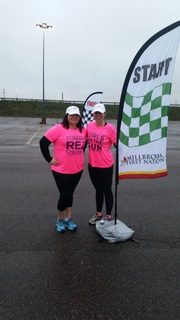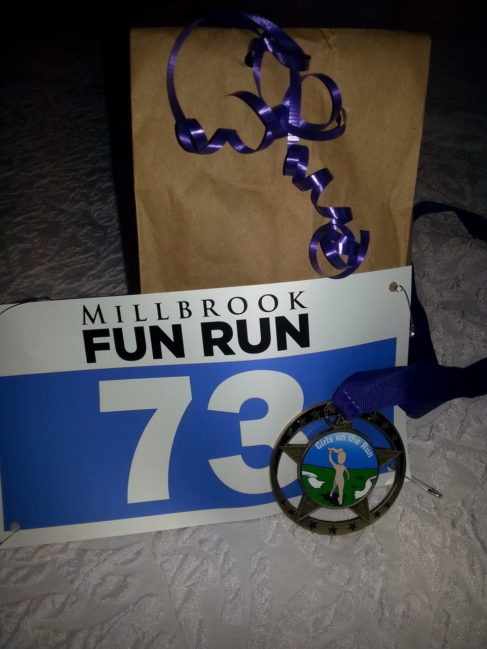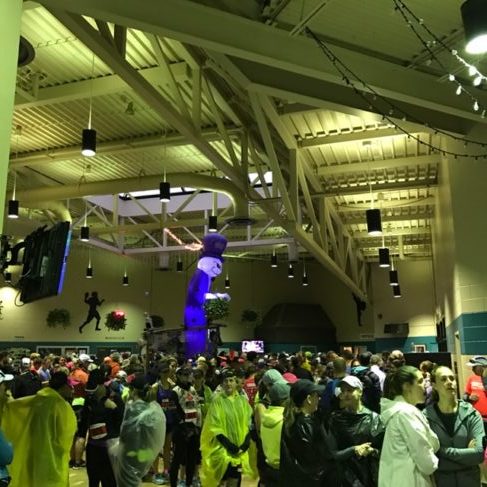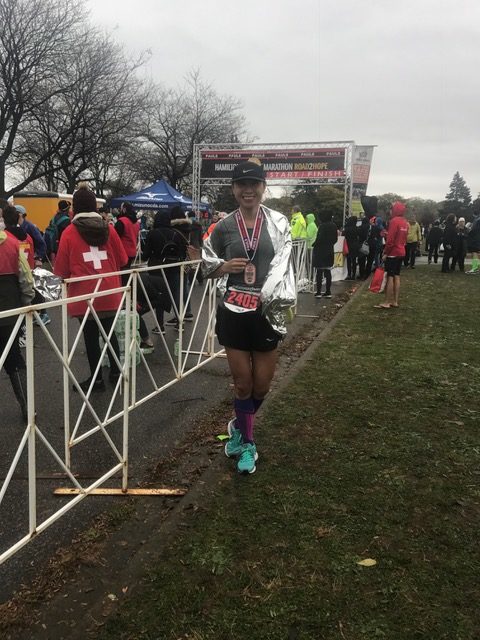Run Like A Girl, Run Like Sunshine
By: Bridget Mallon
Sunshine Bernard signed up for her first 5k race as a 40th birthday gift to herself – the Bluenose in Halifax, Nova Scotia. Then over 300 lbs, it was something she wasn’t sure she could do. She beams when describing the feeling at her first finish line: “AMAZING!” Sunshine returned home to Millbrook First Nation with a new goal in mind: helping kids in her community to feel that same sense of pride and accomplishment she experienced at the finish line. I asked her a few questions about her journey.
What was the moment that made you want to start running?
A few years ago I was watching the news coverage of the Blue Nose Marathon in Halifax and said to myself: “Someday I am going to do that race”. As a gift to myself for my 40th Birthday, I signed up for the 5km run at the Bluenose. If you saw the physical state I was in (over 300lbs) you would have rolled your eyes and laughed. I could barely walk to the fridge (oh wait, I mastered the walk to the fridge – hehehe). I no longer wanted to live the lifestyle I was living, so I started eating healthy and doing a little physical activity. I’ve lost over 120 lbs so far.
How did you train?
I trained in the gym and outdoors. I remember using the telephone poles as guides. I would run from pole to pole and then walk a bit. Before too long I was able to run a little further each time. Someone suggested a running app, so I downloaded it and some music and used my app to help with my running.

What was race day like for you?
So many thoughts were going through my head, like “What the hell was I thinking signing up for this???” At first I was overwhelmed with so many runners and spectators. I don’t like people watching me so I was pretty nervous at the start line. At one point I actually thought about walking away.
During my run, I had flashbacks of my life and how I came to be here. I was feeling strong and proud. I didn’t pay attention to the other runners and pretty much ignored the spectators. As I ran across the finish line, it was probably one of the proudest moments in my life. I did it!!!! That feeling was amazing. I ran my first 5km at 40 years old. I proudly wore my medal. It was a reminder of something I thought I would never ever do but I did it.) I felt very proud.
And that led you to start Girls on the Run and Running Rez Chicks and the community race?
Yes, for weeks after my 5km run, I talked to my family and friends and what an amazing feeling it was, and wished I had started running earlier in life. I continued to run regularly and signed up for a few other races.
I mentioned to my brother how I would like to start a run group for young girls in hopes that they would experience the same feeling I had at age 40 and maybe inspire them to continue running. He said, “Do it up! Start your own group.” At first, I wasn’t sure where to start. Then I contacted a local trainer who I have been working with on other projects through my job at the Health Centre as a Community Diabetes Prevention Worker, and she agreed to help me. I put an ad out for young girls 8-12 years old to join my run group. I held a lobby session at the Health Center where I work to explain what Girls on the Run was about. During the session, a few mothers inquired about having a women’s run group. I thought, I’ll give it a try and see how many women show up.
My first learn to run session for the “Girls on the Run”, I had 12 young girls join and 14 women who we named the “Running Rez Chicks”. This year I invited two older girls who were part of the run the previous years to become mentors for the other runners.
The sessions are held for 6 weeks, followed by a Fun Run. I wanted community members to see how hard these runners worked, so I held the run in my own community.

How did the race go this year, and what do you enjoy about being race director?
Our Fun Run was just held on a Saturday November 6th. I sent out a flyer and a call out for community members to come cheer on the runners and put on a contest for the best motivational sign.
There is a lot of behind the scenes work that goes on when you host a Fun Run. I order t-shirts, medals, get a race permit and look for volunteers to help for the Run. It was quite overwhelming and at one point I thought, this is my first and last run I will ever host. My thoughts quickly changed on race day after seeing how excited the young girls and women were. To see their joy in accomplishing the run, cheering each other on and receiving their medals. It was a great day!!!
I’ve also had parents had come to me afterwards and said they credit the run group in encouraging their child to join other sports or helping with the sport that they are presently in.

So the race medal was designed by one your young runners?
Yes! I asked one of the girls if she would be interested in designing a logo for the Run – Sipu Julien. I took her design to a local production company and they were able to use her logo on the medals and the t-shirts.
This is a big accomplishment for her. She started my run group because her mother had signed her up and she did not want to be there. So every week it was a struggle for her to participate. The weeks went by and each time she came her attitude changed. You could hear her encouraging the other girls to keep going. It was nice to hear her and the other girls motivating and encouraging each other. I also had one of the Running Rez Chicks take the drawing from the medal and bead it for a gift for our trainer.
What are your next goals for your own running and the groups?
After a brief break from running due to an injury I am training for another 10k at the Bluenose. I did the Princess Run in Disney a few years ago and my long-term goal is to do the ½ Marathon there. I want to run through the castle at Magic Kingdom. I hope to do this with my nieces.
As for the Girls on the Run and Running Rez Chicks, I look forward to more runs in the future and inspiring and encouraging others. I would like to invite other First Nation communities to join us.














 Our Magazine
Our Magazine Previous Release
Previous Release
